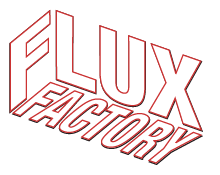Daily News, April 2006

L.I.C. art show
is dill-harmonic
BY CAITLIN KELLY
DAILY NEWS STAFF WRITER
It starts with – what else? – an electric pickle. A giant dill, replaced daily, contains enough salt converted into electrical impulses to power a roomful of funky, homemade musical instruments.
The dill is the opening act for Fluxbox, an art exhibition open until Saturday at the Flux Factory, a six-year-old artists’ collective in Long Island City.
Their 2,000-square-foot gallery at the end of a row of factories is a long way, physically and intellectually, from the powerhouse commercial art scene of Chelsea or SoHo. Those silent, white-walled spaces have prices, if you dare ask for them, that quickly run into five or six figures.
For the 15 members of Fluxbox, most in their 20s and 30s, art is something to share with everyone – the more fun, down to earth and thought-provoking the better.
“We’re trying to create collaborative works that are accessible to a broad public, for people who aren’t schooled in art,” says Morgan Mies, 33, one of the group’s co-founders. Although Mies has a Ph.D. in philosophy and his wife, co-founder Stefany Anne Golberg, 32, has a master’s degree in music and sound, their unpretentious exhibitions draw a wide range of visitors from New York and overseas.
The current show, created by nine artists, uses a 16-bar piece of Golberg’s music looped through a computer. Unlike most exhibits, viewer participation makes it run, beginning with a crank that uses pickle power to start up all the other instruments. As long as there’s power, the music plays and the lights stay on. There’s a glockenspiel “played” from underneath by puffs of air, accompanied by a red Christmas ornament pounding a drum.
As visitors move through the show, they hear, and make, dozens of unusual sounds. A worn leather boot kicks a wooden board. A bottle cap taps a cigar tube and a sardine can filled with toothpicks becomes a minimaraca. A safety pin acts as a record needle to keep an LP of birdsong playing in the background. The group, now a registered, nonprofit organization, receives funding from the state Department of Cultural Affairs and the Queens Council for the Arts. A recent auction raised an additional $20,000.
But, like the ever-changing space itself, the Flux Factory has become temporary as Mies and Golberg seek an arts-minded developer with deep pockets to build a new one.
They’re doing so because within two years, plans call for the former air-conditioning factory, with its spectacular views of Manhattan, to be torn down to make way for a new Long Island Rail Road station.
Flux Factory co-founders Morgan Mies (l.) and his wife, Stefany Anne Golberg, with Flux Factory resident artist Jean Barberis.
Originally published on April 25, 2006
